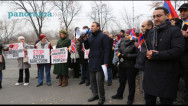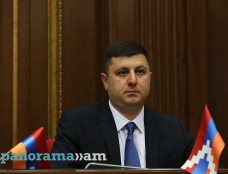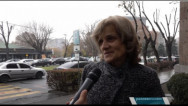
Arab newspaper: Azerbaijan actively speculates on Aghdam events in order to distract attention from pogroms of Armenians
Embassy of Armenia in Syria published an article in the influential Arab newspaper Al-Watan presenting Azerbaijan’s manipulations and falsifications about Aghdam events.
It is noted that in early 1992, Azerbaijan used Khlojaly in order to fire Karabakh’s capital Stepanakert. As a result, houses, schools, hospitals, and buildings of state institutions were destroyed. The Azerbaijani authorities turned Khojlay into a firing point closing access to Karabakh’s only airport, through which the population was provided with food and medicine.
Moreover, Azerbaijan used Khojaly as a firing point for shelling the nearby Armenian-populated villages. Therefore, the neutralization of Khojaly’s firing point by the Nagorno-Karabakh Republic Defense Army forces was a justified measure from the point of view of saving the civilians.
Following the start of the military operation on the neutralization of the firing point, the civilian population used the humanitarian corridor left by the Armenian side in order to move to Aghdam, which was under Azerbaijan’s control at that time. However, the population faced bloody events there.
Therefore, the authors emphasize that it is obvious that the Azerbaijani authorities failed the evacuation of the civilian population from the settlement and that they are responsible for the death of hundreds of people in Aghdam.
“Since then, Baku adopted the strategy of falsifying all the facts and materials of that humanitarian catastrophe and disseminating hatred and horror towards the Armenians among the representatives of the international community,” the article reads.
Falsifying photos is one of Azerbaijan’s most common methods. The authorities use photos of the Kosovo War, victims of 1983 earthquake in Turkey, poor children in Afghanistan, as well as corpses of Hamas militants in Palestine presenting them as Azerbaijanis, who were killed by the Armenians.
“We all have to work on raising the awareness of the international community in order to expose Azerbaijan’s lies. The aim of the active propaganda of ‘Khojaly events’ is to distract the international community’s attention from the pogroms of the Armenians in Sumgait, Baku, Kirovabad, and other Azerbaijani settlements, ethnic cleansing of the Armenians in 28 villages, as well as tragic events in Maragha,” the authors note.
They also highlight that the Azerbaijani side tries to distort Armenia’s international image speculating on the memory of the civilians, who became victims to internal political intrigues and struggle for power in Azerbaijan.
The real perpetrator of the tragedy is Azerbaijan’s Popular Front led by Abulfaz Elchibey. He became the country’s president after the Aghdam events and started to speculate on those events in order to get rid of the former president, Ayaz Mutallibov.
Therefore, Azerbaijan’s political and military leadership is responsible for the death of the civilians in Aghdam.
“The Azerbaijani side cannot answer to simple questions yet. Why the corpses of the victims were found near Aghdam, which was under the control of the Azerbaijani forces? Why there was no organized evacuation of the civilian population despite the Armenians’ warnings on the adio?” the authors wonder.
It is also noted that in subsequent years, the civil rights activists and journalists, who attempted to reveal the truth, were either arrested under the pretext of collaborating with the Security Services of Armenia or died under unclear circumstances. That is why nobody dares to demand that the authorities reveal the truth.
Summing up, the authors note that Azerbaijan continues to disseminate intolerance and armenophobia in the society, and that politics makes the dialogue difficult between the two nations.
On February 26, 1992, during the Karabakh war, around 200 to 300 people (according to Human Rights Watch, and 600 according to the version propagated by Azerbaijan) were killed in unknown circumstances near the city of Aghdam. They were deliberately withheld by the Azerbaijani authorities in the midst of the military actions. The authorities of Azerbaijan intentionally kept the population in the village for months by force and did not evacuate them in order to use them as human shields later as the village was one of the firing points for shooting at the blockaded Stepanakert (among five others).
The residents of Khojaly, coming out through the humanitarian corridor the self-defense forces of the NKR had left open, freely passed more than 10 km and reached the Aghdam city controlled by the Azerbaijani troops. Later, dead bodies of the villagers were foundnot far from the positions of Azerbaijani troops. The exact death toll remains unknown as the official Baku publishes data contradicting each other. Parliamentary Commission investigating the tragic death of the civilians at Aghdam city was dissolved by the order of Heydar Aliyev, the investigative materials are kept secret.
Newsfeed
Videos






























